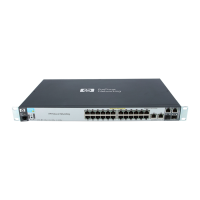SPI Programming Considerations
NonStop Pathway/iTS Management Programming Manual—426749-002
3-33
TERM Objects
1. Issue the STATUS TCP command, initializing the ZTCP field in
ZPWY-DDL-SEL-TCP to the TCP name.
2. Issue the STATUS TCPTERM command, initializing the ZTCP field in
ZPWY-DDL-SEL-TCPTERM to the TCP name and initializing the ZTERM field
to ZPWY-VAL-ALLTERM.
3. Reissue the STATUS TCPTERM command continually, using the context
token returned by PATHMON, until no data is returned in the reply buffer.
TERM Objects
When developing a management application that defines and manages TERM objects,
consider the following:
•
Most TERM commands in SPI are very similar in function to the TERM commands
in the PATHCOM interface. The exceptions are the TELL commands. For more
information, see Tell Messages on page 3-33.
PROG Objects
When developing a management application that defines and manages PROG objects,
consider the following:
•
A PROGTERM entry can only belong to one PROG entry. A PROGTERM entry
cannot exist without a corresponding PROG entry. There can be multiple
PROGTERM entries, one per device type.
•
A PROG is identified by a PROG name; a PROGTERM is identified by a device
type name (for example, T16-6530) within the PROG name.
•
To implement the equivalent of the PATHCOM ADD PROGRAM command, use
ADD PROG plus one ADD PROGTERM for each supported device.
•
To implement the equivalent of the PATHCOM RUN PROGRAM command, use
the START PROG command.
Tell Messages
When developing a management application that defines and controls tell messages,
consider the following:
•
The PATHCOM TELL TERM command is implemented with the SPI ADD TELL,
TELL TERM, and START TELL commands.
•
To perform the equivalent of the PATHCOM TELL TERM (term-1, term-2),
“string” command, follow these steps:
1. Add the tell message with the text “HELLO”:
1. Call SSINIT, issuing ZPWY-CMD-ADD and ZPWY-OBJ-TELL.

